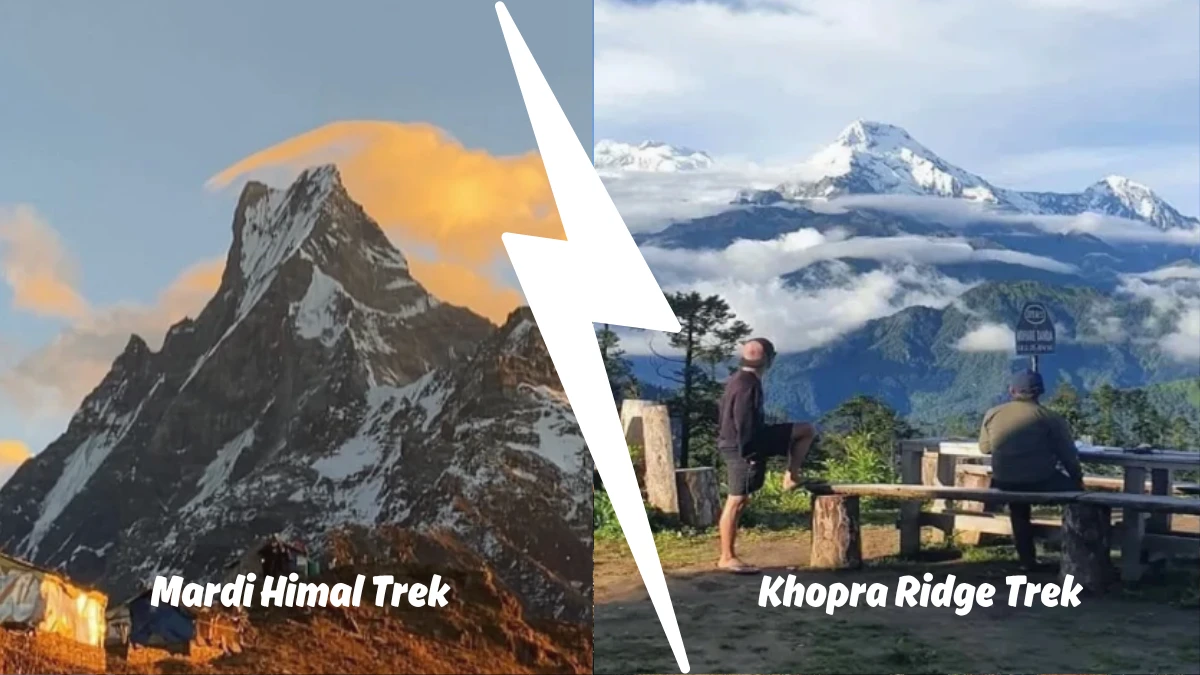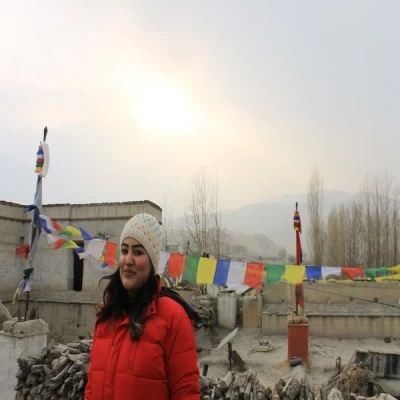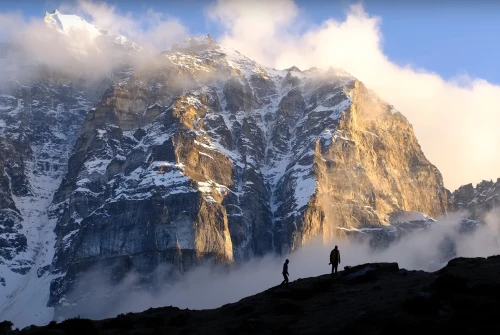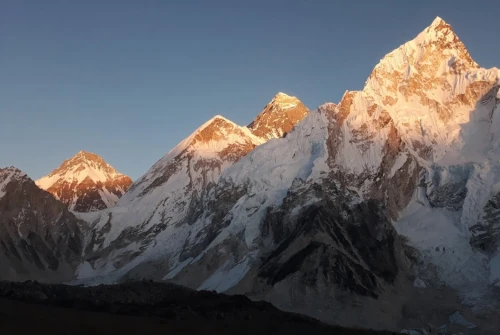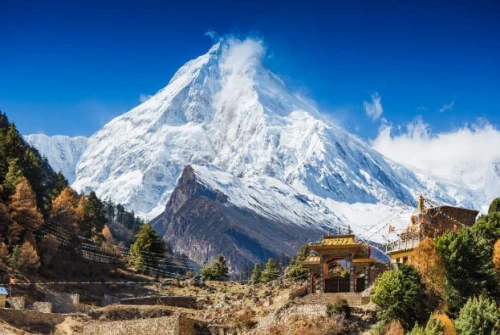Overview
Trekking in Nepal offers an endless menu of scenic trails, but when you're looking for something relatively less crowded yet incredibly rewarding, two names come up often: Mardi Himal Trek and Khopra Ridge Trek. Both are tucked away in the Annapurna region and offer jaw-dropping Himalayan panoramas, serene trails, and authentic Nepali culture, but they do so in their own unique way. Choosing between them depends on your preferences, timeline, and trekking style.
Mardi Himal Trek is perfect for trekkers who want to experience the thrill of walking along narrow ridgelines under the shadow of the majestic Machapuchare (Fishtail Peak). It's a relatively shorter trek with steep climbs and close-up views of Annapurna South and Hiunchuli. Meanwhile, Khopra Ridge Trek takes you off the mainstream trails and into remote highlands where the panoramic views of Dhaulagiri and the sacred Khayar Lake create a spiritual and peaceful experience. This trek is more culturally immersive and ideal for those seeking solitude and connection with local communities.
If you're torn between the two, this guide will help you compare every key aspect, from scenery, trail difficulty, and crowd level to cultural experiences and accommodation quality, so you can decide which trail aligns with your adventure goals.
What Kind of Views Can You Expect on Each Trek?
Both treks offer stunning vistas, but the type of view is quite different.
Mardi Himal: The trail brings you extremely close to the south face of Machapuchare. From High Camp and Mardi Viewpoint, you’ll feel like you’re walking beside the clouds with Annapurna South, Hiunchuli, and Mardi Himal towering right above you. It’s dramatic, steep, and vertical, perfect for photographers and mountain lovers who want proximity over breadth.
Khopra Ridge: Instead of vertical drama, you get wide-angle Himalayan panoramas here. From Khopra Danda, the Dhaulagiri range appears bold and mystical, while you can also see Annapurna I, Nilgiri, and far-off Machapuchare. Plus, the optional hike to Khayar Lake (4,660m) gives a sense of pilgrimage through alpine wilderness, with the lake shimmering amidst mountain shadows.
Summary: Choose Mardi for close-up dramatic peaks. Choose Khopra for vast, sweeping mountain landscapes.
Which Trek Is Easier or More Suitable for Your Fitness Level?
Mardi Himal is a shorter but steeper trek, usually completed in 4 to 6 days. The trail ascends quickly from lush forests to exposed ridgelines above 4,000m. Because of the fast elevation gain, you’ll need to be cautious about altitude sickness if you're not acclimatized properly.
Khopra Ridge Trek generally takes 7 to 10 days, but the altitude gain is more gradual. You’ll climb higher overall (up to Khayar Lake at 4,660m), but you have more days to acclimatize. The trail is moderately challenging and includes several ups and downs, but it's more forgiving on the lungs.
Summary: If you're short on time and have moderate fitness, go for Mardi. If you want a more gradual ascent and safer acclimatization, choose Khopra.
Who Should Choose Mardi Himal and Who Should Choose Khopra Ridge?
Mardi Himal is ideal for:
- Travelers with limited time (under a week)
- Photographers or trekkers chasing dramatic, close-up Himalayan shots
- Those who prefer better trail infrastructure and easier logistics
Khopra Ridge is perfect for:
- Trekkers looking for solitude and authentic rural life
- People who enjoy longer, culturally immersive journeys
- Those wanting to avoid commercialized trails like Annapurna Base Camp or Poon Hill
Summary: Choose Mardi if you're short on time and want epic views fast. Choose Khopra if you value solitude, culture, and slower travel.
Why Is the Cultural Experience Stronger on Khopra Ridge?
While Mardi Himal does pass through a few Gurung villages at lower elevations, the cultural exposure diminishes quickly as you ascend. The upper sections are mostly nature-focused with limited interaction with locals.
In contrast, the Khopra Ridge Trek is deeply connected to the Magar and Gurung communities. You’ll walk through villages where people live traditionally, tending to buffalo, millet fields, and community lodges. Some accommodations are community-run, so your stay directly benefits local families. You may even be invited into a local home for tea or dal bhat, offering a window into rural Nepali life.
Summary: If cultural immersion is important to you, Khopra Ridge offers a far richer experience.
How Are the Teahouse Accommodations on Each Trail?
Mardi Himal has seen a boom in trekking traffic in recent years, so lodges are more developed and available even at higher elevations like High Camp. Expect basic rooms, often with shared bathrooms, but relatively well-maintained compared to remote trails.
Khopra Ridge has fewer but more authentic lodges, some of which are community-run with the goal of promoting sustainable tourism. The accommodations are basic, but the hospitality is heartfelt, and the food is often locally sourced.
Summary: Mardi wins on infrastructure. Khopra wins on authenticity.
Where Are These Treks Located and How Do You Get There?
Both treks begin from Pokhara, Nepal’s trekking hub. Mardi Himal usually starts from Kande or Phedi, just an hour’s drive from Pokhara. Khopra Ridge starts from Nayapul or Ghandruk, also about 2–3 hours away. It can be combined with Ghorepani-Poon Hill or Muldai View Point.
Summary: Access is equally easy for both, but Mardi is quicker in terms of trailhead and return.
What Is the Best Time to Do Each Trek?
The best seasons for both treks are:
- Spring (March to May): Rhododendrons in full bloom, clear skies
- Autumn (September to November): Stable weather, crisp mountain views
Winter (December to February) is possible for Mardi (with snow), but Khopra Ridge can be harsh, and lodges may be closed due to snow accumulation.
Monsoon (June to August) is not ideal for either trek due to slippery trails, leeches, and cloud cover.
Summary: Both treks shine in spring and autumn, but Mardi is slightly more accessible year-round.
How Do the Treks Compare in Terms of Photography and Instagram Moments?
- Mardi Himal offers epic shots of Machapuchare from just a ridge away. Sunrise and sunset photos from High Camp are Instagram gold.
- Khopra Ridge provides more diverse shots: sunset on Dhaulagiri, yak pastures, stone-paved villages, and the mystical Khayar Lake.
Summary: Mardi is perfect for dramatic peaks; Khopra is for variety and uniqueness.
What Permits Do You Need for Mardi Himal and Khopra Ridge Treks?
Both the Mardi Himal and Khopra Ridge treks lie within the boundaries of the Annapurna Conservation Area, so the permits required are quite similar. For either trek, you’ll need the Annapurna Conservation Area Permit (ACAP), which costs NPR 3,000 (~USD 25) for foreign nationals, and the TIMS (Trekkers’ Information Management System) card, which costs NPR 2,000 (~USD 17). These permits are available in Kathmandu and Pokhara at the Nepal Tourism Board offices.
If you're trekking with a registered agency, they typically handle the paperwork for you. Be sure to carry multiple copies of your passport-sized photo and your original passport when applying. These permits are mandatory and must be shown at various checkpoints along the trail.
How Much Does Each Trek Cost?
The cost of trekking Mardi Himal or Khopra Ridge depends on the number of days, whether you trek independently or with a guide, and your overall style (budget vs. mid-range). On average, Mardi Himal Trek, which takes about 5–6 days, will cost around USD 300–500, including permits, food, lodging, and optional guide or porter services.
In contrast, Khopra Ridge Trek, being longer (around 8–10 days), typically costs USD 450–700. You’ll spend more on accommodation and food simply due to the number of trekking days. However, the cultural richness and peacefulness of the trail make the longer journey worthwhile. Transportation for both treks is inexpensive, and most of the cost goes into food, lodging, and staff support if hired.
What Are the Views Like on Each Trek?
The Mardi Himal Trek is known for its intimate and close-up views of Machapuchare (Fishtail), Annapurna South, and Hiunchuli. After the forested trail ends at Low Camp, the terrain opens into narrow ridgelines that seem to float above the clouds. Sunrise and sunset views from High Camp and Mardi Viewpoint are unforgettable.
On the other hand, Khopra Ridge Trek offers vast, sweeping panoramas rather than just proximity. From Khopra Danda, you can see the massive Dhaulagiri range dominating the horizon, along with Annapurna I, Nilgiri, and even Machapuchare from a distance. The side trip to Khayar Lake (4,660m) adds an element of sacred wilderness that you don’t get on the Mardi route. If you’re looking for variety in views like forests, pasture, lake, and ridgeline, Khopra is incredibly rewarding.
Mardi Himal vs Khopra Ridge: Final Summary Table
Category | Mardi Himal Trek | Khopra Ridge Trek |
Duration | 4–6 Days | 7–10 Days |
Max Elevation | 4,500m (Mardi Viewpoint) | 4,660m (Khayar Lake) |
Permits Needed | ACAP + TIMS | ACAP + TIMS |
Trek Difficulty | Moderate to tough (short, steep) | Moderate (gradual, longer) |
Trail Type | Forest to alpine ridge | Forest, meadows, high lake, panoramic ridge |
Mountain Views | Close-up Machapuchare, Annapurna South | Panoramic views incl. Dhaulagiri, Annapurna I |
Cultural Experience | Light (lower villages only) | Strong (community lodges, local life) |
Crowds | Busy in peak season | Quiet and remote |
Accommodation | Moderate teahouses | Basic, often community-run |
Estimated Cost | USD 300–500 | USD 450–700 |
Best For | Short treks with dramatic ridges | Off-the-beaten-path, cultural immersion |
Final Thoughts: Which Trek Should You Choose?
If you have limited time and want a compact adventure with intense mountain scenery, the Mardi Himal Trek is a fantastic choice. It's well-supported, easy to organize, and visually spectacular. If you prefer to travel slowly, connect with local culture, walk on quiet trails, and witness Himalayan life up close, then the Khopra Ridge Trek will leave a deeper impression.
Still confused?
You could even combine both if you have 12–14 days, starting with the Mardi Himal trail and looping around to finish through the Khopra Ridge!
Frequently Asked Questions (FAQs)
1. Can I do the Mardi Himal or Khopra Ridge Trek without a guide?
Yes, both treks can be done independently, especially Mardi Himal, which is well-marked and has frequent lodges. However, Khopra Ridge is more remote, and hiring a guide is recommended for navigation, cultural insight, and safety—especially if you plan to visit Khayar Lake.
2. Which trek is better for beginners, Mardi Himal or Khopra Ridge?
If you are short on time and have moderate fitness, Mardi Himal is suitable for beginners, especially if you go slowly and acclimatize well. Khopra Ridge is longer and slightly more remote but easier in terms of elevation gain, making it ideal for those who want a peaceful pace and cultural exposure.
3. Is altitude sickness a concern on these treks?
Yes, both treks reach elevations above 4,000 meters, so altitude sickness is possible, especially on Mardi Himal due to the quicker ascent. It's important to ascend gradually, stay hydrated, and take acclimatization seriously—especially on the summit days.
4. Which trek is less crowded during peak season?
Khopra Ridge Trek is significantly less crowded than Mardi Himal, even in high seasons (March–May and October–November). If you're seeking solitude and fewer tourists, Khopra is the better choice.
5. Can I combine Mardi Himal and Khopra Ridge in one trip?
Yes, if you have 12–14 days, it’s possible to combine both treks, starting with Mardi Himal and looping down through Ghorepani to Khopra Ridge. It’s an adventurous option for those who want the best of both trails.
